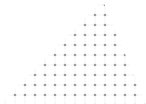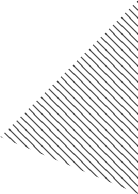Skills
I am a UX Generalist in my daily work. I always follow the entire process - from research to the product roadmap.
For me, smiling and positive attitude is the only way to deliver amazing projects. Yet, my professional skills can be oriented in three dimensions, respectively:
For me, smiling and positive attitude is the only way to deliver amazing projects. Yet, my professional skills can be oriented in three dimensions, respectively:

1
2
3
2
3
UX Design Skills
UX Enterprise Skills
UX Software Skills
My UX fields of Interest









Technical Writing
Interaction Design
Usability Evaluation
User Needs Research
Visual Design
Prototyping
Information Architecture
UX Management
As User Research, I articulate the importance of user research inside my organization. Not just before a feature or product is designed, but also during and after design deployment. I try to exam users' behaviors, activities, obligations, needs, and environment. I exploit these observations along with analytical data (quantitative and qualitative) to identify their struggles inside and outside the service to provide potential solutions through the creation of the hypothesis. I also gather and organize data in ways that can be used to drive design, such as, personas, user stories, user journey maps, blueprints, etc.
Focus: Who is our user and what is their environment?
User Need Research

Toolkit: Contextual observation, user interviews, analytical statistics, user surveys, process life cycle, user journey mapping, opportunity workshop, personas, etc.
When performing information architecture, I establish the flow between our costumers and our products. To do that, I uncover and describe users' models of work. I organize, structure, and label content, functions and features. I also choose which design patterns will efficiently organize information to establish a content hierarchy based on the user's conceptual model, and how the information influences the user's thought process and behaviors. My goal is to develop a controlled vocabulary across all products.
Focus: How do users search and flow through the content?
Information Architecture

Toolkit: Grouping information clusters, card sorting, content hierarchy, sitemaps, etc.
As an Interaction Designer, I can map how users can move through a product to achieve their goals. I choose which UI patterns are most appropriate. To do that, I use the correct user interface standards.
I research to define clear pathways and establish consistent behaviors and micro-interaction to help point users in the right direction. I lack experience in producing animations as feedback indicators when the user travels down a product's pathways, as I would like to do.
I research to define clear pathways and establish consistent behaviors and micro-interaction to help point users in the right direction. I lack experience in producing animations as feedback indicators when the user travels down a product's pathways, as I would like to do.
Focus: How do users move through an application? Which affordances can I exploit?
Interaction Design

Toolkit: Workflows, wireframes, whiteboard sessions, task flow diagrams, development lingo, animations.
Visual Designer is my least favorite role as a designer. I have education and experience in that direction, however, it is not my comfort zone. Nevertheless, when I have to perform tasks related to visual design, I work upon the initial design theories established by the interaction design process and apply appropriate typographical hierarchy, devise grids, color palettes, material patterns, and develop iconography. I support my work on the fundamental principles of visual design. But most importantly, I support my designs on a design system to establish consistency across all visual designs.
Focus: What is visually appealing to our users?
Visual Design

Toolkit: Design System: typography, patterns, iconography, microInteractions, color palettes, etc.
When prototyping, my main goal is to translate ideas into interactions by translating solutions in prototypes and simulations. Depending on the design phase, I manage my wireframes between low and high fidelity wireframes. I create a variety of interactive workflows with coded or non-coded prototypes to provide a proof of concept, to properly explore the design space before deciding on a solution. In my daily work, I use Sketch and Invision. But I can use other tools like Figma, Invision Studio, etc. In this role, I help the team understand if an interactive pattern effectively solves a problem or needs to be modified.
Focus: How do we capture design ideas, bring them to life, and test their interactivity?
Prototyping

Toolkit: Users Flow (OmniGraffle), low fidelity wireframes (Balsamiq), high fidelity wireframes (Sketch / Figma), clickable workflows (Invision), interactive animations (Flinto / Anima)
As a Usability Tester, I first analyze which evaluation method is the most appropriate: Formative vs. Summative test; Moderated vs. Unmoderated Test; Lab vs. Remote Test; Usability Testing vs. Expert Review; Usability testing vs. A/B Test; and Usability Testing vs. Survey. I am a data-driven Designer. I love to log and analyze data. Ether from qualitative analysis, like content analysis to quantitative analysis, like factor analysis. These findings help influence product revisions and future ideation.
Focus: Is our product easy to use? Will users comprehend our product?
Usability Evaluation

Toolkit: Test plans, proof of concept, testing debriefs, A/B testing, survey research, content analysis, factor analysis, multivariable analysis.
I love to write and communicate my ideas and especially my findings. Reports, manuscripts, papers, presentations, manuals, posters, etc., they all are the externalization and final result of a journey. They are the tangible output of an intangible process. I love the mental exercise of expressing visually (by words or graphic representations) to express and support complex ideas, either to users or to stakeholders.
Focus: How can I communicate my ideas and finding?
Technical Writing

Toolkit: Confluence, Docs, Presentations, Spreedsheets, etc.
By being in a team of one, my plate is full of roles to play. Before starting a new project or sprint, I have to do a lot of management first, as prioritizing UX and usability problems. Liaise with stakeholders is the key to everything. Particularly, to manage their expectation and establish a healthy relationship of trade-offs. To bay-in the stakeholder and development team, I often have to argue about the cost-benefit of UX activities. Especially, when talking about the number, calculating the ROI of certain activities have been crucial for the development of my organization UX maturity. To support that, I persuade the development and product team to take action upon the user research results.
Focus: Plan and manage the short and long term UX work and strategy.
UX Management

Toolkit: Kaban, Jira, Trello and evangelize UX throughout the organization.
UX Enterprise Skills
Because I have an academic path from Design to Management, and now Engineering, I can assembly a certain enterprise skills very valuable for a Product Designer role:
I'm a curious designer. Through the years, I have acquired the necessary knowledge to evaluate if a certain design method needs to be adapted to the business or technological context in demand.
I'm always pursuing knowledge. With my current focus on AI & ML, I can provide a design focus that fewer designers can. The perfect symbiosis to be able to bring together, Design + Business + Technology to pursue innovative customer experiences. I can plan design strategies focus on the long term run. I'm a designer who can think holistically and also understand the technology and business needs.

I have an MBA in Creative Industries management. UX has gained a lot of influence in business and strategy. This degree gave me the background to understand the world of management and finance. Data has an increasing say when it comes to product development and marketing. I am able to set up proper KPIs and extract information from data invaluable.



Development Methods
Technologic Oriented Strategy
Business Knowledge oriented
UX Software Skills
I don't code on my daily work. Nevertheless, I understand CSS, CSS3, HTML, html5 and some javascript.
Understand those languages facilitates my communication with the development teams. Comprehend what makes up a digital product as well as the technological constraints and possibilities provides me an unbeatable advantage.
Understand those languages facilitates my communication with the development teams. Comprehend what makes up a digital product as well as the technological constraints and possibilities provides me an unbeatable advantage.
UI/UX Design Tools
Main Tools

Sketch
I have advance skills in sketch as well integrating with other extensions.

Figma
When I don't have a mac to work with Sketch I can easily transit for Figma.

Invision
I use Invision on a daily base. It is the best collaborative tool to work with remote teams. The integration with Sketch is an invaluable add-value to faster and productive work.

Balsamiq
Best tool for early developments and prove of concept.
Collaboration & Handoff Tools

Miro
Miro is my collaborative tool of choice. It helps to bring down silos in such an efficient way. It breaks drown the challenges of working with remote teams.

Zeplin
Helps to centralize communication for all our cross-functional teamwork.

Abstract
We use abstract to organize and centralize the design workflow. It is an efficient management system tool that enables us a seamless open collaboration between teams and other organizational stakeholders.
Research

SPSS
I use SPSS for analysing the data behind the research. For me, this is a simple tool for statistical analysis during user research discovery stage.

R
When I need to do a more advanced analysis to compare ordinal data, I use R to do it.

Excel
Excel doesn't need introductions and is a tremendous tool for several activities. It is inevitable that I use it on a daily bases.
Other Tools I have knowledge

After Effects
I learned AE during my degrees, but I never explored properly the tool. So, I just have basic knowledge about it.

Illustrator
I worked as Graphic Designer for a few years. I have advance skills in AI, InDesign and Photoshop.

InDesign
Currently, I am more interested in Indesign for interactive ebook, rather than for traditional publishing.

Photoshop
I don't use PS for UI/UX tasks. Is not the appropriate tool for that. But I have advance skills in PS too.

Maya Autodesk
I have a degree in computing animation. There, I could learn and develop some Maya skills.

Motion 5
The same as Maya.

